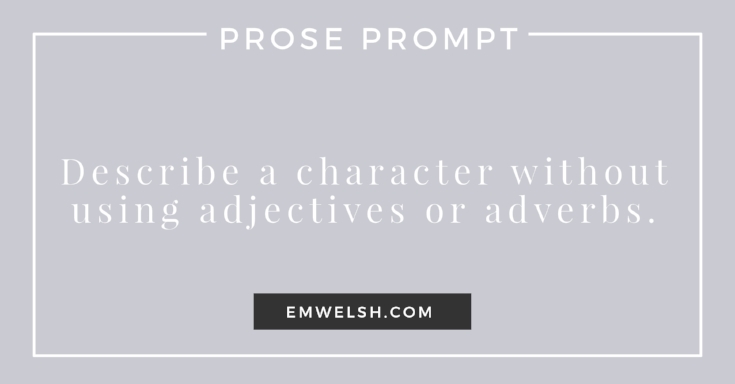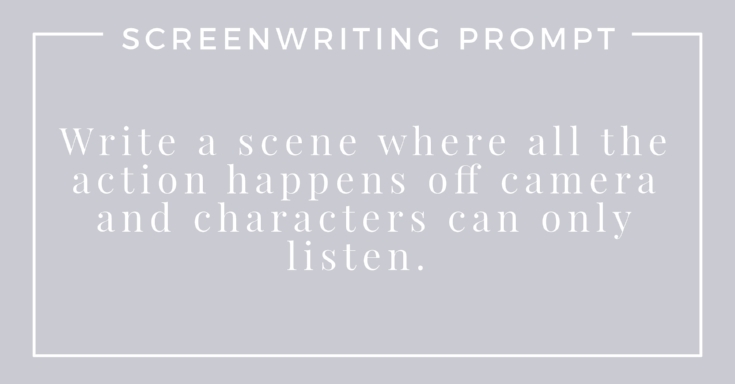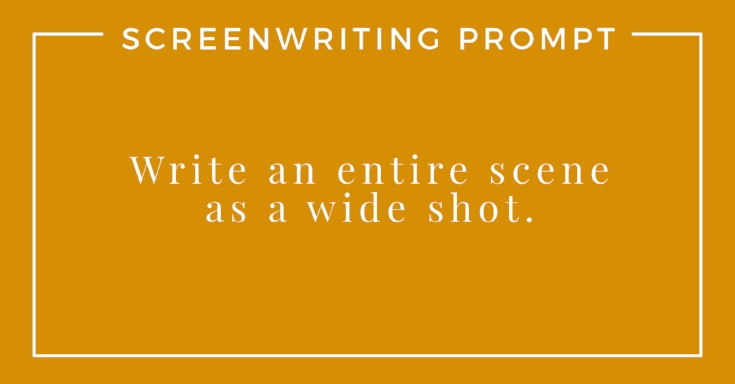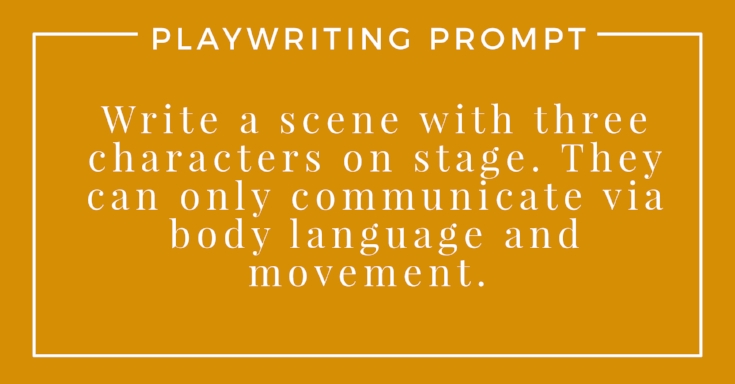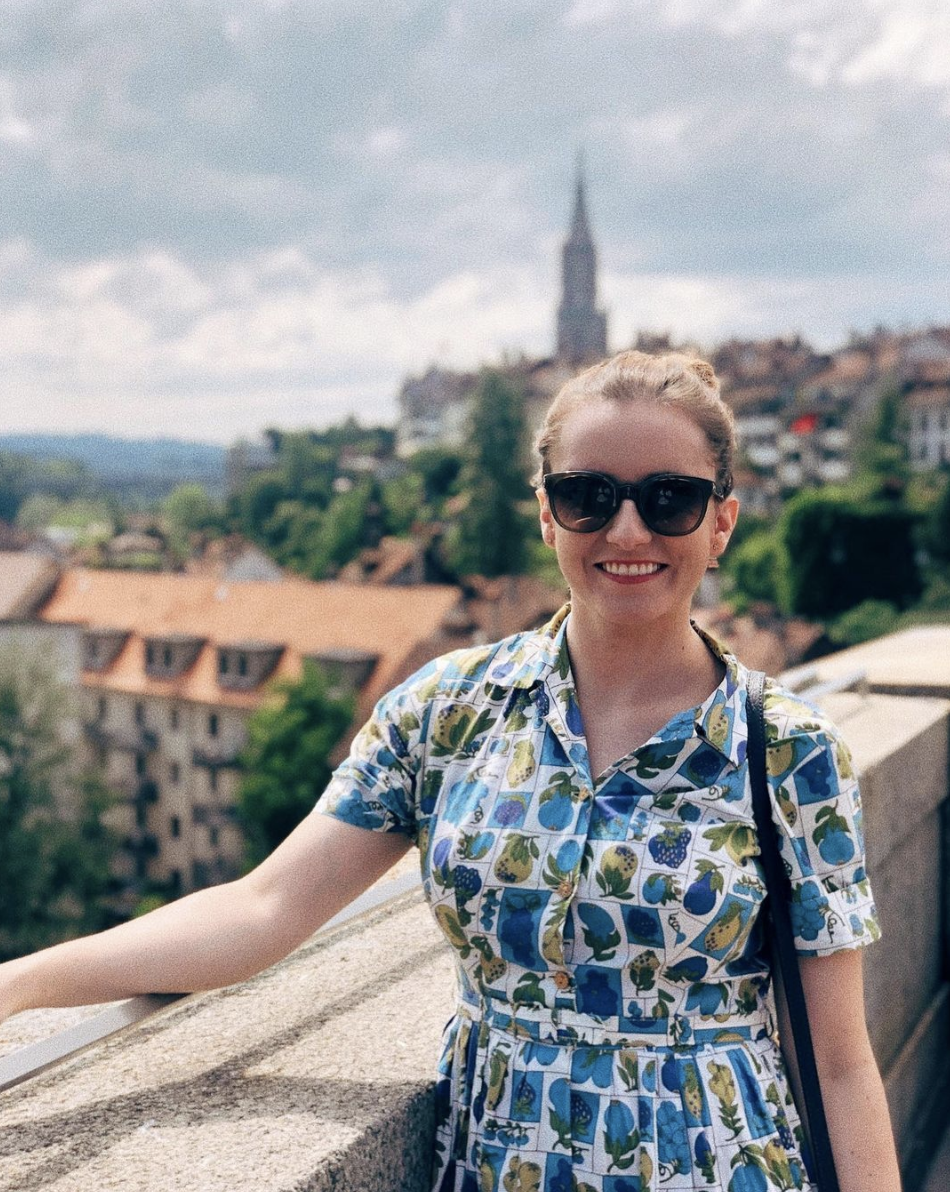16 Prompts to Get You Thinking like a Storyteller
/Writing prompts are a fun way to get writing inspiration and beat down writer's block. They're low stress and force you to think in a new way, challenging you and enabling you to find new story ideas. That's why in coordination with my e-course, Swiss Army Storytelling, I've created a list of storytelling prompts to help you not only become a more dynamic storyteller, but also to give you a taste of what you'll find in my course.
There are four prompts for each medium - prose, screenwriting, playwriting and video game writing - that focus on the strengths of each one and how to practice those. They also work wonderfully in conjunction my free ebook, The Storytelling System to help you develop new story ideas based on the medium you're writing in.
Additionally, all of the prompts below are meant to be challenging for both new storytellers and the more advanced ones, so don't feel deterred if you struggle at first. They are meant to make you think in new ways and in favor of the medium you are writing in. They won't be something you can knock out all in one day, but something you have to turn over in your head and spend time pondering. As a result you'll start thinking like a longtermstoryteller and not just a writer.
Prose Prompts
Whether you're a seasoned novelist or a newbie, the following prompts will get you thinking more intentionally about sentences and languages in prose. You'll start to better understand how each sentence can have its own narrator and how the length and flow of a sentence can create meaning and sound.
Learn to play with language with this incredibly difficult prompt to describe a character without using adjectives or adverbs! After this exercise you might feel a little bit worn out, but you'll have learned to approach writing in a completely new way, forcing you to use literary devices like metaphors and similes to relay information you'd usually flower with adjectives.
After describing your favorite scene in great detail, you'll understand not only how a single image can convey so much information, but also how applying your words and narration to that image can tell a different story all together. What you choose to describe shapes the story and the way readers see the image. How you order your words and the tone you give them tells a story that could be completely different than the image. For fun, try doing this exercise with a friend and compare what you both wrote.
In every other storytelling medium out there, it is relatively clear who said what. Even if a play is meant to be ambiguous, it is eventually performed and the mysteries are less mysterious because a face is given the voice. In prose that is not required, so that long conversations without clarifying who said what can leave the reader confused. But with this exercise you can use that to your advantage. See how the dialogue reads in a new way without knowing who says what and see if you can write the two characters so well and distinct from one another that the reader no longer needs to know who said what.
Get four bonus storytelling prompts by filling out the form below
Like the dialogue prompt earlier, writing the same scene twice from two different perspectives will teach you how to reframe your narrative and writing style based on whose perspective we are experiencing as readers. What new information is gleamed with this different insight? Do things in the story change? What else changes besides the narrative? The ways two perspectives differ are endless, making this a perfect exercise for learning to write a variety of people unlike yourself.
Screenwriting Prompts
Learning all the rules and ways to format a script is the easy part. The hard part as a newbie screenwriter is learning to think visually even when all you have in front of you is a blank page and a pen or keyboard. With the following prompts you'll take your screenwriting skills to the next level, training your mind to think about the movie screen as much as the story.
In film, color is a facet of style and often something determined by the production designers. But color is a theme of your story and an aspect that will make your story memorable to viewers. Choose two colors and insert them into your script as much as possible, using the actual words for the colors as little as possible. Leave out anything else. For example if you choose the colors "blue" and "yellow," don't mention anything about the grass, but certainly mention how the sun looks, the waves move, or the color of the dazzling woman's dress.
By forcing yourself to hide the character speaking, you're forcing yourself to think about the reactions of the listener. A character who has a lot to say is an easy one for actors to figure out. It's the characters who sit in silence that are less clear. Think about where the listener's eyes wander, what they see, and at what point the words said by the other character start to move them, if they do at all. See how you can make a single shot that is two to three minutes long still interesting and able to hold the viewer's attention.
Much like the previous exercise where one person is talking and all we can see is the listener, this exercise takes it to the next level and allows the camera more movement. Additionally, it will help you focus on sounds in your script instead of just dialogue and reactions. What do the people on screen hear? Do they say anything? How does it change the feeling of the scene for the big fight or the hearty reunion to take place in a different room than a camera? Try to think of as many sounds as you can, but also think of sounds that might not make it through the wall and the mysteries the unheard can create for both the characters and the audience.
Screenwriters don't usually write the types of shots in a script, but if they write their scripts with a type of shot in mind, the visuals will transfer to the story without specifics. Write a brief scene as a wide shot, but don't make it an establishing shot that is quickly over. Have the most intense farewell scene take place on an open prairie or a dinner take place through a window. See how the distance in a scene creates a dollhouse effect and how the distance from the action creates a new sensation for the story. Usually intense emotional scenes are shot as close-ups, but writing the scene from far away creates a unique, big picture visual that can be equally as impactful if done well.
Get four bonus storytelling prompts by filling out the form below!
Playwriting Prompts
Writing for the theater is so interesting because while there is a lot of artistic freedom, there still are the obvious limitations of the stage and the actors and what sort of action can be produced on stage. For instance, a realistic dragon cannot be portrayed on stage like it can in a movie, so the theater must be more creative and artistic with that sort of limitation. Additionally, there's the matter of the actors and the audience and how they contribute to each play. Using the following exercises, you'll be able to start thinking about these other aspects more intentionally.
One of the big aspects about theater is the acting. Unlike a film where the audience will only see one performance, with plays the performance changes not only on a nightly basis, but also with the directors and actors. For that reason, it's a good idea to write a scene that is dynamic in how it can be performed, but still maintains the same general idea or meaning behind it. Using this exercise, try to write a scene that can be performed both with joy and with sadness, but remember it doesn't have to be genuine joy or sadness, just facets of those emotions.
This exercise forces you to address the audience in your play directly, be it by having your actor sit next to an audience member or speaking with them from the stage. The audience is what gives the theater its life, so remembering to always think about the audience as an essential trait of playwriting. In forcing yourself to include them in your scene, you'll be forced to think also about the theater space and the stage, enhancing your playwriting abilities. For an even greater challenge, try and make it so the audience's reaction shapes the way the rest of the scene goes.
Monologues on stage are a very common trait of theater. It is often used to express a character's inner state or their intentions. However, when you do this exercise, try to imagine that this scene is the entire play. Consider ways in which the actor must use just their body to help tell the story or some of the objects they might hold or touch during certain parts of their speech. Ask yourself if they are talking to themselves, or the audience too. Think back to the screenwriting exercise that plays with similar mechanics, but remember how different being on stage feels, how raw and real it can feel to see someone standing on stage spouting their feelings. Use this exercise to appeal to that deep human to human connection between the actor and the audience.
The opposite of the previous exercise, this prompt will have you thinking about movement, blocking and the stage like never before. While it may seem strange and uncomfortable to write a scene in which no one speaks, with the right movement and enhanced emotions, a lot can be portrayed. Try to tell a story with this scene and how the characters move on the stage. Think about what it means when someone exits or enters to help your playwriting abilities grow beyond dialogue.
Video Game Writing Prompts
Video games exist as an amalgamation of all the other mediums. They are both stories that can be experienced by themselves and stories that can be experienced as groups. They are rich with dialogue and performances, but also choices that determine how the story will go. By working through the following exercises and writing some samples quests, you'll get a better understand of the aspects that make video game writing different, such as the open world and choices that affect the story.
The objective of this prompt is to write a quest that is virtually the same, but when a player picks it up at one location versus another, the story changes in minor ways. While you may want the outcome to be the same in the end, think about how the quest can be achieved in a snowy landscape and how the player would have to do things differently compared to an arid desert. Consider the different objects or characters the player might meet depending on local and the ways in which minor aspects of the story can change. In this way, you'll develop your skills at thinking dynamically, allowing your character to move freely and not on a set path like the other mediums.
A simple exercise to understand, but difficult to master, in this prompt you'll write the same quest that has 10 different endings. Thinking of two or three endings will be easy, but after that expect to have some difficulties. Also be sure that the different endings occur as a result of a decision earlier on in the quest. Did the player take a right or a left? How might that shape the end result? If you start to get stuck, look to the game the Stanley Parable for inspiration.
Like the previous exercise, this prompt focuses on how choices determine different outcomes in a video game. With this prompt those choices can also decide what information the player uncovers in the first place. Try to think about how different information might take the player on a different path, some of them being lies or betrayals. This exercise allows you to to think in more bite-sized terms about the ways choices can affect a narrative, but also aids you in writing characters in video games. Most NPC's (non-playable characters) must have a few different sides to themselves that still reflect who they are. They can't be both a slimy scoundrel and a giving saint, but they do have to have a point where they crack and show a slightly different side of themselves, something you'll work on with this exercise.
Many people are averse to puzzles or combat in video games. In this exercise you'll be forced to confront either of these traits of video games and use them as a way to move the plot forward. The combat or puzzle must tell a story in its own way, but still be entertaining and challenging. Try to think about ways in which clues can be uncovered in a puzzle or the combat can change locations mid-battle to develop the story. It won't be an easy exercise, especially if you avoid combat-based games, but it will force you to consider the "gaming" aspect of video games in a completely new way.
Get four bonus storytelling prompts by filling out the form below
Did you find these prompts helpful? Tell me about your stories below!


